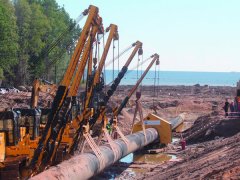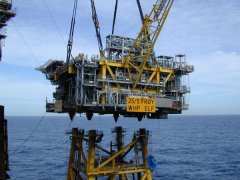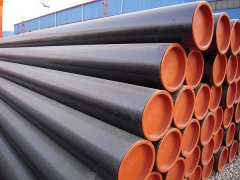Piping material guide helps you to know steel pipes grade and dimensions better and purchase the products you want. How to choose proper steel pipes, the answer is anything but simple. The choice of pipe includes whether the pipe will be used for water, oil, gas or sewer. It depends on the installation method, which may be influenced by surface conditions. Initial cost, solid type, corrosion resistance, compatibly, life expectancy and availability make the simple choice very difficult. Hoping piping material grades and dimensions give you a brief guidance.
Piping Material Grade
Piping material grade refers to divisions within different types of seamless and ERW pipe and designates mechanical properties such as minimum yield and tensile strengths. Grade B has higher tensile and yield strength than Grade A. It is manufactured to higher carbon content steel. Grade A, being a softer steel, is easier to bend and is recommended for use in close coiling and cold bending. Grade B has higher stress values and is better suited for machining operations. Grade C, which is available in ASTM-106, has higher tensile and yield strength than Grades A & B.
Piping Material Dimensions
Many changes have been made to ASTM specifications over the years. One of the more recent has been to make the specifications fit with metric, and more correctly, with the measurements of pipe and the related fittings.To change the pipe outside diameter (OD) and wall thickness, simply multiply the SI dimensions by the appropriate factor to convert to metric. However, an inch is not a real inch. Nowhere on pipe 12" and smaller is there a corresponding measurement because this size has no real numerical value.
Steel Industry Outlook
In the coming 2016, steel pipe manufacturers and suppliers in China rely on the “ the Silk Road Economic Belt and the 21st-Century Maritime Silk Road” or “ the Belt and the Road” for short initiated by Chinese Central Government to explore wider markets. The Belt and the Road involves countries in Asia, European Union and Africa, which are greatly potential markets of steel industry. We are looking forward a bright future for industry in 2016.

Piping Material Grade
Piping material grade refers to divisions within different types of seamless and ERW pipe and designates mechanical properties such as minimum yield and tensile strengths. Grade B has higher tensile and yield strength than Grade A. It is manufactured to higher carbon content steel. Grade A, being a softer steel, is easier to bend and is recommended for use in close coiling and cold bending. Grade B has higher stress values and is better suited for machining operations. Grade C, which is available in ASTM-106, has higher tensile and yield strength than Grades A & B.
Piping Material Dimensions
Many changes have been made to ASTM specifications over the years. One of the more recent has been to make the specifications fit with metric, and more correctly, with the measurements of pipe and the related fittings.To change the pipe outside diameter (OD) and wall thickness, simply multiply the SI dimensions by the appropriate factor to convert to metric. However, an inch is not a real inch. Nowhere on pipe 12" and smaller is there a corresponding measurement because this size has no real numerical value.
Steel Industry Outlook
In the coming 2016, steel pipe manufacturers and suppliers in China rely on the “ the Silk Road Economic Belt and the 21st-Century Maritime Silk Road” or “ the Belt and the Road” for short initiated by Chinese Central Government to explore wider markets. The Belt and the Road involves countries in Asia, European Union and Africa, which are greatly potential markets of steel industry. We are looking forward a bright future for industry in 2016.




